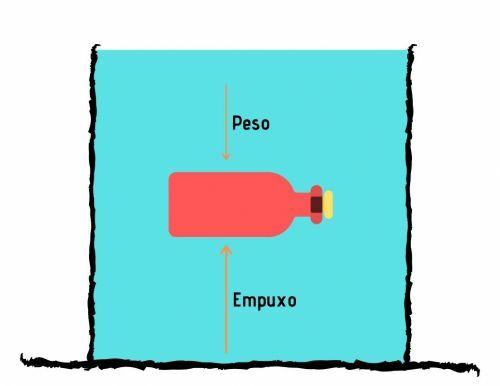The phases of the moon are result of Moon and Earth movements around the Sun. Depending on the position of these stars, we see different portions of the illuminated Moon.
These movements take place in cycles that are represented by the phases of the Moon. What determines each of these phases is the size of the area of the Moon that is illuminated by the Sun.
The phases of the Moon are: new, crescent, full and waning. The lunar cycle lasts between 29 and 30 days and is the basis for our calendar - formed by 12 months with an average of 30 days each.
The Moon is Earth's only natural satellite and is located 368,730.60 km from our planet. Its diameter corresponds to 27% of the Earth's diameter.
the phases of the moon
The Moon is a satellite and has no light of its own, which means that we can only see it from Earth thanks to sunlight.
But as the Earth and Moon are constantly moving around the Sun, from time to time, we see different proportions of its illuminated surface.
 A waning, full, crescent and new moon, respectively. Southern hemisphere view.
A waning, full, crescent and new moon, respectively. Southern hemisphere view.
The proportions of the Sunlit Moon are represented by the lunar phases: new, crescent, full and waning. Each of these phases lasts between 7 to 8 days and the total cycle lasts between 29 and 30 days.
To understand when each of these phases occurs, it is necessary to know how the Moon moves around the Sun.
The Moon makes three types of movements:
- Rotation: it rotates around its own axis.
- Revolution: revolves around the planet Earth.
- Translation: it revolves around the Sun along with the Earth.
 Graphic representation of the phases of the Moon.
Graphic representation of the phases of the Moon.
Depending on the positions of the Moon and Earth in solar orbit, we have different phases, each with its own characteristics:
New Moon
In this phase, the Moon is positioned between the Sun and Earth. As it is in the same direction as the Sun, the face of the Moon facing the Earth is not illuminated and therefore, at the apex, it is impossible to see it. As the days go by, the Moon becomes more visible, until it enters the next phase.
crescent quarter (crescent moon)
It is the phase when the Moon forms a 90° angle with the Earth and we can see ¼ of its surface. The shape of the Moon is in a semicircle, and which side of the Moon appears in this phase depends on which hemisphere the observer sees it. In the case of the southern hemisphere, the convex part of the Moon is pointed to the west.
Full moon
A full moon happens when the Earth is between the Moon and the Sun. As in this period the Sun's rays reach the entire face that we can see, the Moon is fully illuminated for the observer.
waning quarter (waning moon)
In this phase the Moon returns to the shape of a semicircle, but opposite the crescent Moon. Also called the waning quarter, at this stage it is possible to see ¼ of the satellite, as it is again positioned at 90° from Earth. The Moon wanes until it becomes new and starts a new cycle.
See also the meaning of solar system and satellite.
Eclipses
Eclipses happen when the three celestial bodies Sun, Moon and Earth are aligned. This alignment can cause the Moon to be hidden by the Earth's shadow, which we call a lunar eclipse, or it can obscure the Sun with the Moon's shadow, in this case, the solar eclipse.
 Graphic representation of lunar and solar eclipses.
Graphic representation of lunar and solar eclipses.
In all cycles of the Moon, the three celestial bodies line up, but eclipses do not happen every month because the Moon's orbit is tilted at 5° to the Earth's plane of rotation.
The alignment of Sun, Moon and Earth enough to cause an eclipse (solar or lunar) happens on average two or three times a year.
Solar eclipse: total or partial
- O total eclipse happens when the Moon completely covers the sun, it can only be seen from a small part of the Globe, it is the central and darkest point of the shadow in the image above. There, during the eclipse, the sky darkens as if it were night.
- O partial eclipse it happens when the Moon only covers part of the Sun. It can be seen from a larger area of the globe, represented by the lightest shadow in the image.
understand more about eclipses and solar eclipse.
lunar calendar
Lunar calendars are timekeeping records based on lunar phases and date back over 20,000 years. Babylonians and Egyptians are examples of people who built their calendars according to the phases of the Moon.
Muslims currently use a lunar calendar. The Islamic calendar exactly follows the lunar cycle. Although it is also 12 months old, it is 11 days shorter than the Gregorian calendar that we use.
Moon phases and tidal influences
the movement of rising and falling ocean waters is known as the tide. This movement is influenced by lunar phases. In addition to the Moon, the Sun and the Earth's own rotational movement also influence the rise and fall of the tides.
This influence happens because the Earth and Moon are attracted by the force of gravity. This Moon effect causes a deformity in the shape of the Earth, which produces a bulge at the ends aligned with the Moon. This bulge is the ocean waters attracted by the Moon and that will cause the tides.
The sun also exerts a gravitational force on the Earth, but less than the Moon. So when the Sun, Moon and Earth align, the effect multiplies and the high tide. Therefore, high tides correspond to the phases of new and full moon - when the alignment of the stars occurs.
when the Moon and Sun form a right angle between them, the attraction of bodies is neutralized and happens to low tide. This positioning of the stars corresponds to the crescent and waning moons.
The time and place where the low and high tides occur depend on the Earth's rotational movement, that is, the movement around its own axis.
See also the meaning of gravity.



